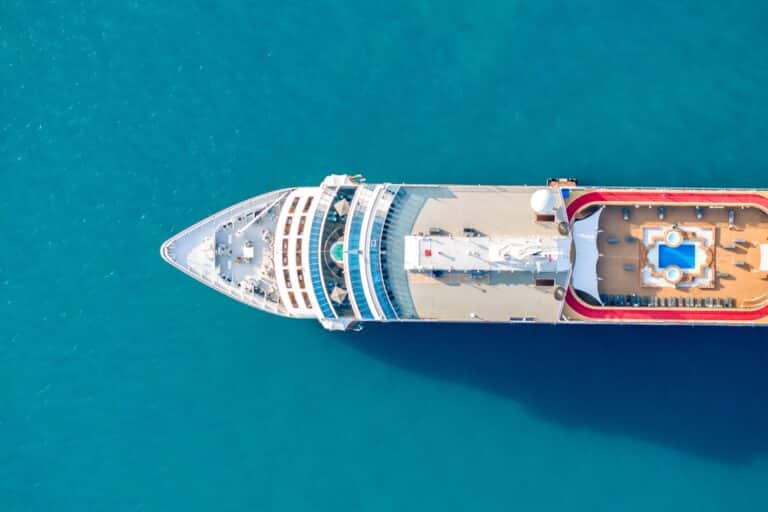If you’re planning a cruise, you might not think about managing money on the ship right away. However, it’s an important detail to think about. A common question travelers have is, “Can you exchange money on a cruise ship?” The answer is yes, but there are some important points to remember. Knowing how money exchange works on a cruise, including the fees and rates, is helpful. This knowledge can help you save money and avoid extra costs.
In this guide, we will explain everything you need to know about exchanging money on a cruise ship. We will share tips and advice to help you enjoy your travels.
Why You Might Need to Exchange Money Onboard
While many cruise ship services and trips take major currencies like the U.S. dollar, you might need local money for activities on land, tips, or unique buys. For example:
- Giving tips to local guides or bus drivers during trips.
- Buying at local markets or food stalls.
- Using services in remote places that do not take credit cards.
If you are sailing to several countries, changing money on board might feel easy. But before you go to the purser’s desk, it is good to know how these services work.
How Cruise Ship Currency Exchange Works
Most cruise ships have places where you can exchange money. These are usually at the front desk or the purser’s office. But, the services and choices might be different. Here are the key things you should know:
Accepted Currencies and Payment Methods
Cruise lines often change popular money like U.S. dollars, euros, and British pounds to the local money of where you are going. You usually pay in cash, but some services let you charge to your onboard account or credit card.
Typical Fees and Markups
Currency exchange on ships usually has high fees and bad rates because it is easy to do. Here is what you can count on:
- Markups of 5–10% on exchange rates compared to market rates.
- Extra fees for each transaction.
Pro Tip: Look at daily currency exchange rates on sites like XE.com. Compare them to the rates you get onboard. This will help you see how much more you are paying.

Comparing Onboard Rates vs. Port & ATM Options
To choose if you should trade on board or somewhere else, it’s important to look at the options.
Onboard Currency Exchange
- Pros: It’s easy; you can do everything without getting off the ship.
- Cons: Fees are high and rates are not so good. There are few choices for currency.
Port Currency Exchange Booths
- Pros: You can often find better rates, especially at official kiosks in top tourist spots.
- Cons: Hours and availability can change. A lot of people may be in line on busy port days.
ATMs
- Pros: Good rates, especially when you use a credit card that doesn’t charge fees for outside transactions.
- Cons: ATM fees can be $3 to $10 each time. There might be few or no ATMs in some areas.
Pro Tip: Take out bigger amounts from ATMs to lower fees. But be careful not to carry too much cash.
Step-By-Step Guide to Exchanging Money Onboard
Here is how to swap currency on some well-known cruise lines:
Carnival Cruise Line
- Go to the Guest Services deck to ask for an exchange.
- Only cash exchanges are allowed; fees are already added to the markup rate.
Royal Caribbean
- Go to the front desk for small exchanges. There are a few currency options.
- You can also use the onboard ATMs, but there are fees.
Norwegian Cruise Line
- A lot of Norwegian ships do not provide currency exchangeon board. You should plan to exchange money at ATMs or in ports.
Disney Cruise Line
- Visit Guest Services for exchanges. Disney has great service for families needing small amounts of local money.
Alternatives to Onboard Exchange
If you want to steer clear of onboard fees, consider these options:
Prepaid Cruise Card or Onboard Account
Cruise lines are using cashless systems more and more. Here, transactions go directly to a prepaid card or your onboard account. You can use this for purchases on the ship and for trips arranged by the cruise line. But make sure to check if local sellers accept this payment method.
Credit Cards & Dynamic Currency Conversion
Credit cards are accepted for big purchases in many places. Try to choose cards that do not have fees for foreign transactions. Also, be careful of “dynamic currency conversion.” This practice charges you in your home currency instead of the local one. It can cost you more.
Pro Tip: Always choose to pay in the local currency to skip hidden fees.
Tips to Get the Best Rates at Sea
Here is how you can save money and avoid stress when traveling on an international cruise:
- Exchange small amounts of local money at a time. This helps you avoid wasting cash you don’t use.
- Plan for trips and buying items before you get on the ship. This way, you can guess how much money you will need at each stop.
- Use a travel credit card that has no fees for changing money when you go abroad.
- Think about changing your money at your home bank for better rates before you leave for your trip.
What to Watch Out For
Hidden Fees & Limits
Some cruise ships set a limit on how much money you can exchange per transaction or trip. If you want to spend a lot at ports, make sure you have enough local money ready ahead of time.
Nonrefundable Policies
Cruise lines usually do not change leftover money from other countries back to U.S. dollars. Make sure to use your local money or be ready to keep it as a keepsake.
Plan Ahead to Save Money
Changing money on a cruise ship is easy, but it can be expensive. You can save money and enjoy your trip more by knowing the fees, comparing other options, and planning ahead. Whether you travel often or are new to cruising, these tips will help you manage currency exchanges without stress. This way, you can spend more time enjoying your adventure.
